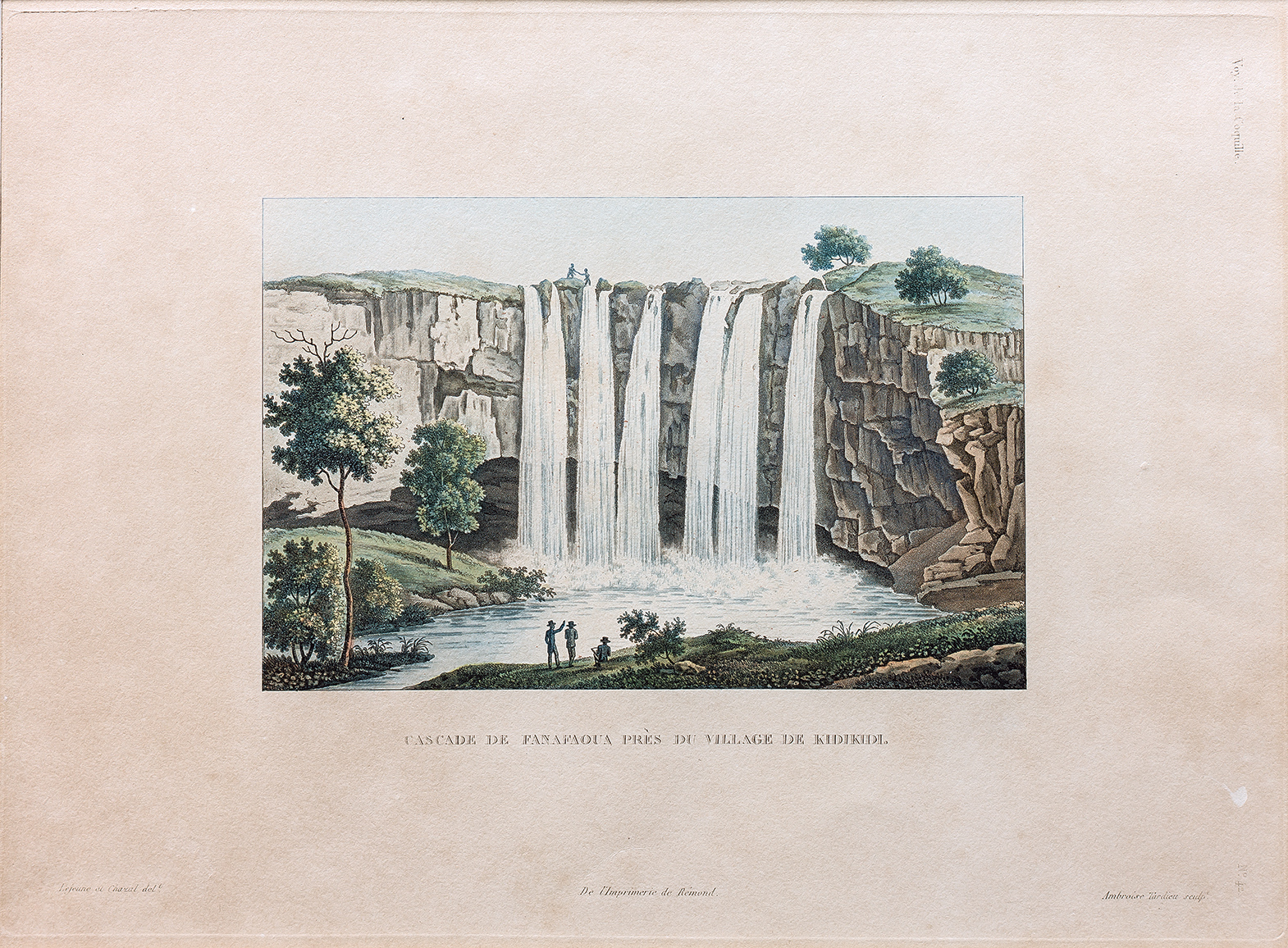LEJEUNE, Jules Louis; CHAZAL, Antoine;
Waianiwaniwa Waterfall Near the Village of Kerikeri
1826
Hand-coloured engraving on paper
340 x 555mm

Original title: ‘Cascade de Fanafaoua près du village de Kidikidi’. Engraved by Ambroise Tardieu. Plate No. 42 from Louis Isidore Duperrey, Voyage autour du monde, exécuté par ordre du roi, sur la corvette de Sa Majesté, la Coquille, pendant les années 1822, 1823, 1824, et 1825 (Paris: Arthus Bertrand, 1826). Other lithographs from the series can be viewed here.
The following text comes from the catalogue for the exhibition Tirohanga Whānui.
The French title Cascade de Fanafaoua barely conveys the real name of the beautiful single-drop waterfall. Waianiwaniwa translates as ‘waters of the rainbow’. The falls were visited on 5 April 1824 by Lesson and a party of others, probably including the artist Lejeune, who may have depicted himself as the seated figure in the foreground.
Nearby, at Kororipo pā, across the river from the Mission House at Kerikeri, lived ‘the famous Shongi’ as Lesson and others called Hongi Hika. It was from here that Hongi had during recent years assembled canoes and warriors before embarking on the musket raids which had made Ngāpuhi feared throughout the upper part of the North Island.
The French party was greeted at Hongi’s pā with a haka whose ferocity drew forth some of Lesson’s most expressive prose:
‘It was a sight to see—these ferocious islanders rolling their flashing eyes rhythmically, the eyeballs turning in the sockets so that only the whites could be seen, while their choked voices throbbed and sobbed or roared like those of tigers … Shongi smiled gently at this hymn of triumph, the notes of which he had many times heard mingled with the cries of enemies massacred at his orders and roasted by his tribesmen.’
Another in the visiting party was the aristocrat Jules-Alphonse-René Poret, Baron de Blosseville, at that time a junior officer, who wrote of the falls, ‘Behind the screen of water which shoots out, the rock forms a deep cavern the sombre colour of which contrasts in an extraordinary way with the whiteness of the spray. The natives claim that the lower basin cannot be sounded and they make a god of the rainbow which is often seen above the cascade.’
Exhibition History
Tirohanga Whānui: Views from the Past, Te Kōngahu Museum of Waitangi, 15 April to 15 September 2017

